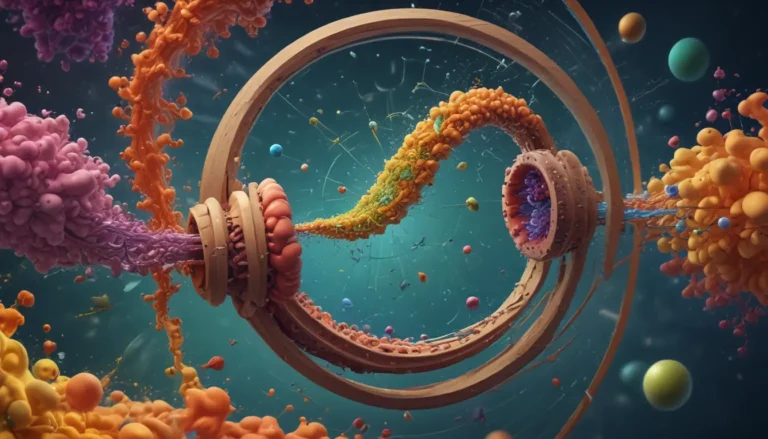A Note About Images: The images used in our articles are for illustration purposes only and may not exactly match the content. They are meant to engage readers, but the text should be relied upon for accurate information.
Welcome to the mesmerizing realm of chemistry, where the concept of a “half-cell” reigns supreme. Embedded within the intricate web of chemical reactions, half-cells are the unsung heroes that drive the field of electrochemistry forward. These tiny powerhouses play a pivotal role in unlocking groundbreaking discoveries and revolutionizing technological advancements. Join us on a captivating journey as we unravel eight mind-blowing facts about half-cells, shedding light on their importance and incredible capabilities.
The Foundation of Electrochemical Cells: Half-Cell Basics
At the core of electrochemical cells lies the fundamental concept of a half-cell. Serving as the building block of batteries and fuel cells, a half-cell comprises either the anode or cathode within a cell structure. Whether simple or complex, these half-cells are essential components in the generation of electricity, making them indispensable in the realm of electrochemistry.
Decoding Reactivity: The Significance of Half-Cell Potential
Each half-cell possesses a unique characteristic known as the half-cell potential, which determines its reactivity towards electron transfer. By comparing the half-cell potentials of different cells, scientists can predict the direction of electron flow and calculate cell voltage. This critical measure plays a crucial role in understanding the behavior of half-cells in various environments.
The Nernst Equation: A Tool of Precision and Insight
Enter the realm of precision and insight with the powerful Nernst equation, a tool that calculates half-cell potential under non-standard conditions. By accounting for factors like temperature, concentration, and pressure, this equation allows researchers to optimize cell performance and delve deeper into the behavior of half-cells within diverse settings.
Balancing Redox Equations: The Art of Half-Cell Reactions
Navigating the world of electrochemical cells requires a keen eye for identifying and balancing half-cell reactions, essential steps in comprehending overall redox reactions. Through these intricate processes, electrons are exchanged, and chemical transformations occur, paving the way for the conversion of chemical energy into electrical energy.
Maintaining Balance: The Vital Role of the Salt Bridge
In the intricate dance of electrochemical cells, the salt bridge emerges as a silent guardian, preserving electrical neutrality by facilitating ion flow between half-cells. This crucial component prevents the accumulation of charges and ensures the smooth continuation of redox reactions within the cell structure.
The SHE Reference Point: A Beacon of Stability
Enter the realm of stability with the Standard Hydrogen Electrode (SHE), a reference half-cell that sets the standard for electrode potential in electrochemistry. With a defined potential of zero volts, the SHE serves as a benchmark for measuring and evaluating the potentials of other half-cells, enabling precise comparisons and assessments within electrochemical systems.
Diverse Materials, Infinite Possibilities: Exploring Half-Cell Components
Dive into a world of infinite possibilities as you explore the vast array of materials used in half-cells. From metals like zinc and copper to non-metals like graphite and lead dioxide, the diversity in material composition allows for the creation and optimization of electrochemical systems tailored to specific applications and requirements.
A Biological Symphony: Half-Cells in Nature
Beyond the realm of artificial electrochemical cells, half-cell reactions play a vital role in numerous biological processes, such as cellular respiration and photosynthesis. By unraveling the principles of half-cell reactions, scientists gain insight into the fundamental processes that underpin life itself, bridging the gap between natural phenomena and technological innovations.
These insightful facts about half-cells illuminate their profound significance in the field of electrochemistry and beyond, offering a glimpse into their versatile applications and remarkable impact on our understanding of the natural and technological world.
The Journey Continues: Embracing Innovation and Discovery
As we traverse the intricate landscape of chemistry, the concept of a half-cell emerges as a beacon of innovation and discovery. From its pivotal role in battery technologies to its applications in corrosion prevention, half-cells continue to shape the modern landscape of chemistry, offering new insights and possibilities for scientific exploration.
By unraveling the complexities of half-cell reactions, scientists and researchers pave the way for future advancements and innovative solutions in diverse fields, from energy storage to environmental protection. The study of half-cells opens doors to a world of possibilities, driving progress and innovation in the ever-evolving realm of chemistry.
Delve Deeper: Unlocking the Secrets of Electrochemistry
Embark on a journey of exploration as you uncover the mysteries of electrochemistry. Discover the intricacies of the Nernst equation, a powerful tool for calculating half-cell potential, and unravel the driving force behind redox reactions. Gain a comprehensive understanding of electrode potential and its profound significance in shaping electrochemical systems and applications.
Your Feedback Matters
Our mission to deliver engaging and informative content is fueled by your feedback and contributions. Each fact shared on our platform is a testament to the diverse insights and knowledge brought forth by our community of users. Rest assured that our dedicated team of editors rigorously reviews each submission to uphold the highest standards of accuracy and credibility. Trust in our commitment to quality and authenticity as you embark on a journey of exploration and learning with us.
In conclusion, the world of half-cells offers a captivating glimpse into the realms of chemistry and beyond, showcasing the remarkable impact of these microscopic powerhouses on our understanding of the natural and technological world. From their essential role in electrochemical systems to their intricate functions in biological processes, half-cells stand as testaments to the enduring power of scientific inquiry and discovery.
FAQs: Exploring the World of Half-Cells
- Q: What is a half-cell in chemistry?
-
A: A half-cell is a fundamental component of an electrochemical cell that consists of an electrode and a conductive solution, essential for studying and analyzing redox reactions.
-
Q: How does a half-cell work?
-
A: A half-cell operates by facilitating oxidation or reduction reactions at the electrode, generating a flow of electrons and creating an electrical potential difference that drives overall electrochemical reactions.
-
Q: What are the different types of half-cells?
-
A: There are two main types of half-cells: the anode half-cell, which involves oxidation reactions, and the cathode half-cell, which involves reduction reactions.
-
Q: What are some applications of half-cells?
-
A: Half-cells find applications in batteries, fuel cells, electroplating processes, and corrosion prevention methods, among others, showcasing their diverse utility in various fields.
-
Q: Why is understanding half-cells important in chemistry?
- A: Understanding half-cells is crucial for predicting and comprehending electrochemical reactions, enabling advancements in energy storage, environmental protection, and electrochemical synthesis.
Unravel the mysteries of electrochemistry and delve deeper into the fascinating world of half-cells, where innovation and discovery converge to shape the future of chemistry. Join us on this enlightening journey of exploration and learning as we uncover the hidden gems of science and technology, one fact at a time.






